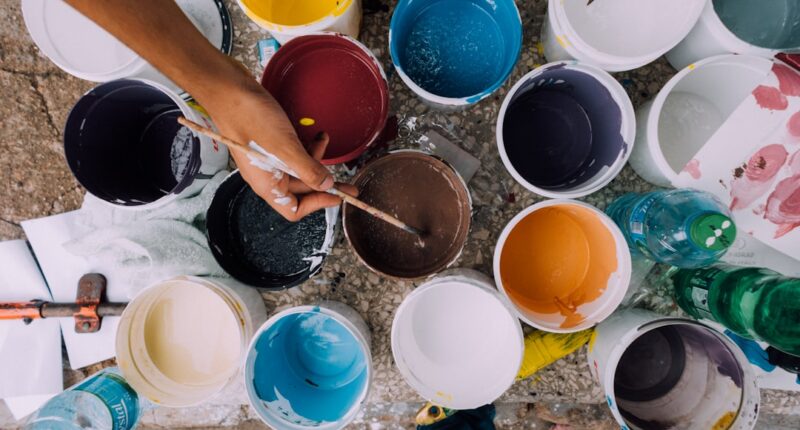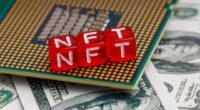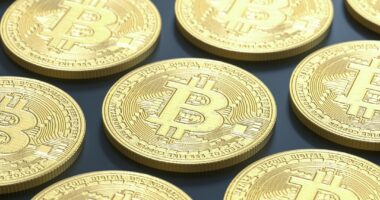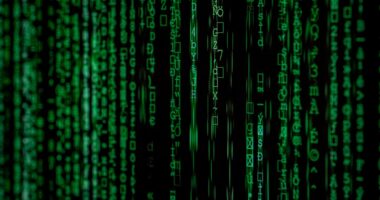Non-fungible tokens (NFTs) are digital assets that represent ownership or authenticity of unique items or content using blockchain technology. Unlike fungible cryptocurrencies such as Bitcoin or Ethereum, NFTs are non-interchangeable and possess individual characteristics. This uniqueness contributes to their value and attractiveness to collectors and investors.
NFTs can represent various digital assets, including artwork, music, videos, virtual real estate, and social media content. Each NFT contains metadata providing information about the asset, such as creator, creation date, and other relevant details. This metadata is stored on a blockchain, a decentralized digital ledger that records transactions across a computer network, ensuring verifiable ownership and provenance.
In recent years, NFTs have gained prominence in the art world, offering artists new ways to monetize digital creations and allowing collectors to securely own and trade digital art. The unique properties of NFTs have also generated interest in other industries, including gaming, entertainment, and social media, presenting new opportunities for creators and content owners to engage audiences and generate revenue.
Key Takeaways
- NFT stands for non-fungible token, a unique digital asset that represents ownership of a specific item or piece of content.
- NFT art is created and stored on a blockchain, allowing for proof of ownership and authenticity through a digital ledger.
- Digital art ownership has seen a significant rise with the advent of NFTs, allowing artists to directly sell their work to collectors without the need for intermediaries.
- The value of NFT art is determined by factors such as scarcity, provenance, and the reputation of the artist, leading to high prices for some pieces.
- Benefits of NFT art include increased artist control and royalties, while drawbacks include environmental concerns and potential for copyright infringement.
How does NFT art work?
NFT art is created and sold using blockchain technology, which provides a secure and transparent way to verify ownership and authenticity of digital assets. When an artist creates a piece of digital art that they want to sell as an NFT, they first need to choose a blockchain platform to mint and list their NFT. There are several popular blockchain platforms for creating and selling NFTs, such as Ethereum, Binance Smart Chain, and Flow.
Once the artist has chosen a platform, they can use it to mint their digital art as an NFT. Minting an NFT involves creating a unique token on the chosen blockchain that represents ownership of the digital art. The artist can then add metadata to the NFT, such as the title of the artwork, a description, and any other relevant information.
Once the NFT is minted and the metadata is added, it is listed for sale on a marketplace that supports NFTs. When a collector purchases an NFT art piece, they are buying the token that represents ownership of the digital artwork. The ownership of the NFT is recorded on the blockchain, providing a transparent and immutable record of ownership.
This allows collectors to prove the authenticity and ownership of their digital art, as well as to trade or sell it on NFT marketplaces. The rise of digital art ownership The rise of digital art ownership has been fueled by the growing popularity of NFTs, which provide a new way for artists to monetize their digital creations and for collectors to own and trade digital art in a secure and transparent manner. In the past, digital art was often undervalued and difficult to monetize, as it could be easily copied and distributed without the artist’s consent.
However, NFTs have changed this by providing a way to create scarcity and provenance for digital art, making it more valuable and collectible. NFT art has also opened up new opportunities for artists to reach global audiences and connect with collectors and fans from around the world. By selling their art as NFTs, artists can bypass traditional gatekeepers such as galleries and auction houses, allowing them to retain more control over their work and earn a larger share of the profits.
This has democratized the art world to some extent, making it more accessible for emerging artists and creators to showcase and sell their work. Furthermore, the rise of digital art ownership has also led to new forms of artistic expression and collaboration. Artists are exploring new mediums and techniques to create digital art that is specifically designed to be experienced in a digital format.
This has led to the emergence of virtual reality (VR) art, augmented reality (AR) art, generative art, and other innovative forms of digital expression that push the boundaries of traditional art forms. Understanding the value of NFT art The value of NFT art is derived from its scarcity, provenance, and authenticity, which are all guaranteed by blockchain technology. Unlike traditional digital art, which can be easily copied and distributed without the artist’s consent, NFT art is unique and cannot be replicated.
This scarcity makes it more valuable to collectors and investors who are willing to pay a premium for ownership of a rare and authentic piece of digital art. Additionally, the provenance of NFT art is recorded on the blockchain, providing a transparent and immutable record of ownership. This ensures that collectors can verify the authenticity and ownership of their digital art, which adds to its value and appeal.
The transparency provided by blockchain technology also helps to prevent fraud and counterfeit art, as it is easy to verify the history and ownership of an NFT. The value of NFT art is also influenced by factors such as the reputation of the artist, the quality of the artwork, its cultural significance, and its relevance to current trends and themes. Collectors are often drawn to NFT art that is created by well-known artists or that addresses important social or political issues.
Additionally, NFT art that is part of a limited edition series or that has historical significance may also command higher prices in the marketplace. Benefits and drawbacks of NFT art NFT art offers several benefits for artists, collectors, and the art industry as a whole. For artists, NFTs provide a new way to monetize their digital creations and reach global audiences without relying on traditional gatekeepers such as galleries or auction houses.
This allows artists to retain more control over their work and earn a larger share of the profits from their sales. Additionally, NFTs provide a way for artists to create scarcity and provenance for their digital art, making it more valuable and collectible. For collectors, NFT art offers a secure and transparent way to own and trade digital art.
The use of blockchain technology ensures that the ownership and provenance of NFTs can be easily verified and cannot be altered or tampered with. This provides collectors with confidence in the authenticity of their digital art and allows them to prove ownership when trading or selling their NFTs. However, there are also drawbacks to NFT art that should be considered.
One concern is the environmental impact of blockchain technology, particularly in the case of platforms such as Ethereum that use proof-of-work consensus mechanisms. The energy consumption required to mint and trade NFTs has raised concerns about its carbon footprint and sustainability. Additionally, there have been instances of copyright infringement and plagiarism in the NFT space, as it can be difficult to verify the originality of digital art without physical signatures or certificates of authenticity.
Navigating the world of NFT marketplaces Navigating the world of NFT marketplaces can be overwhelming due to the sheer number of platforms available and the variety of digital assets being sold. When choosing an NFT marketplace to buy or sell digital art, it’s important to consider factors such as fees, user interface, security features, community engagement, and support for different blockchain platforms. Some popular NFT marketplaces include OpenSea, Rarible, Foundation, SuperRare, and KnownOrigin.
These platforms offer a range of features for creators and collectors, such as customizable storefronts, auction capabilities, social features, curation mechanisms, and secondary market support. It’s important to research each marketplace to understand its unique offerings and community dynamics before deciding where to list or purchase NFT art. Additionally, it’s important for artists to consider the long-term implications of choosing a specific blockchain platform for minting their NFTs.
Different blockchains have different technical capabilities, security features, transaction costs, environmental impacts, and community dynamics. Artists should carefully weigh these factors when deciding where to mint their NFTs in order to maximize their reach and potential for sales. The future of NFT art The future of NFT art is likely to be shaped by ongoing technological advancements, regulatory developments, market trends, and cultural shifts.
As blockchain technology continues to evolve, we can expect improvements in scalability, interoperability, sustainability, and user experience for NFT marketplaces. This will make it easier for creators and collectors to engage with NFT art in a secure and efficient manner. Regulatory developments will also play a significant role in shaping the future of NFT art.
As governments around the world grapple with how to classify and regulate NFTs, we can expect changes in taxation policies, intellectual property laws, consumer protection measures, and anti-money laundering regulations. These developments will have implications for how NFTs are created, sold, traded, and owned in different jurisdictions. Market trends will continue to influence the types of digital assets being sold as NFTs and the ways in which they are bought and sold.
We can expect to see new forms of digital art emerge that are specifically designed for NFTs, as well as innovative ways for creators to engage with their audiences through tokenized experiences. Additionally, we may see new financial instruments and investment vehicles emerge that are based on NFTs. Cultural shifts will also impact the future of NFT art as society becomes more accustomed to digital ownership and virtual experiences.
As people become more comfortable with owning digital assets such as virtual real estate, in-game items, virtual fashion, and digital collectibles, we can expect new forms of creative expression to emerge that cater to these evolving consumer preferences. In conclusion, NFT art represents an exciting new frontier for artists, collectors, and the broader creative economy. By leveraging blockchain technology, NFTs provide a secure and transparent way to own and trade digital art while creating new opportunities for artistic expression and monetization.
As the ecosystem continues to evolve, it will be important for stakeholders to consider the benefits and drawbacks of NFT art while navigating the complexities of blockchain technology and market dynamics in order to realize its full potential.
If you’re interested in learning more about the world of NFTs and digital art ownership, you might want to check out this article on eth-news.com. It provides a comprehensive overview of the NFT market and how it is revolutionizing the art world. The article delves into the potential impact of NFTs on artists, collectors, and the art market as a whole, making it a valuable resource for anyone looking to understand the implications of this emerging technology.
FAQs

What is an NFT art?
An NFT art, or non-fungible token art, is a type of digital artwork that is authenticated using blockchain technology. Each NFT art piece is unique and cannot be replicated, making it a form of digital asset.
How does NFT art ownership work?
Ownership of NFT art is recorded on a blockchain, which is a decentralized and transparent digital ledger. When someone purchases an NFT art piece, they receive a digital certificate of ownership that is stored on the blockchain.
What makes NFT art different from traditional art?
NFT art is different from traditional art in that it exists in digital form and is authenticated using blockchain technology. NFT art ownership is also based on digital certificates rather than physical possession of the artwork.
Can NFT art be bought and sold?
Yes, NFT art can be bought and sold on various online platforms that specialize in NFT transactions. These transactions are recorded on the blockchain, providing a transparent and secure way to transfer ownership of digital art.
Is NFT art a form of investment?
Some people view NFT art as a form of investment, as the value of certain NFT art pieces can appreciate over time. However, the NFT art market is still relatively new and can be volatile, so potential investors should exercise caution.





